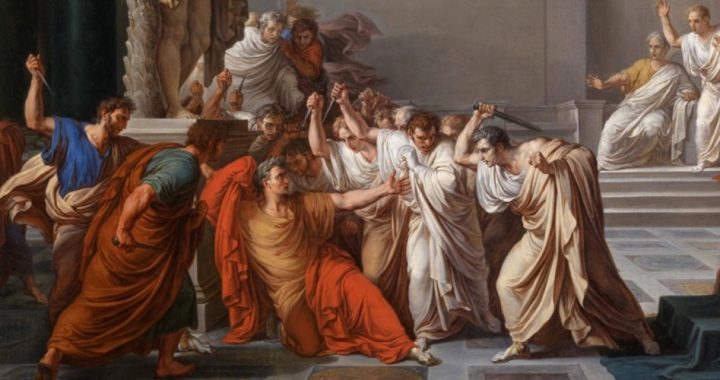
To understand the workings of government, it is necessary to acknowledge the mostly unseen hand of conspiracy. Only seldom do historians mention it, and even less the majority of commentators on current events; the very word “conspiracy” has acquired overtones of hysteria and emotionalism. To be styled a “conspiracy theorist” is perhaps the ultimate reproach in media-driven discourse. Yet conspiracies, difficult to detect and even more difficult to prove, are as natural an element of politics as algae is of pond water.
It is frequently assumed that political behavior and events are a manifestation of the laws of psychology and group behavior. This may sometimes be the case, but far more often than most of us suspect, politics is in fact a carefully orchestrated spectacle. Scandals that appear to erupt spontaneously into public view are often created at opportune moments. Acts of war and terrorism are sometimes encouraged and even concocted to serve cynical policy goals. Seemingly random swings in finance are timed to further political agendas. And most abominably, people of power and influence often work actively to subvert their own government and culture. Whenever men organize in secret to further any of these nefarious aims, they are acting conspiratorially.
Now and then, such activities are exposed to the light of day. Ancient Rome, for example, was a hotbed of intrigue and conspiracy. The best-known was the Catilinarian Conspiracy, an attempt to overthrow the Roman Republic orchestrated by a senator known as Lucius Sergius Catilina, or Catiline in English. This conspiracy was exposed and ultimately broken up thanks to the efforts of Cicero, a Roman statesman and orator whose series of addresses to the Senate denouncing Catiline and his confederates remains one of the most compelling documentations of any political conspiracy in history. By the time of Cicero and Catiline, the old republic was already on life support, having been weakened by several generations of intermittent military dictatorship . Catiline conspired with a group of aristocrats, military veterans, and fellow senators to overthrow the tottering old order. When exposed by Cicero, he was forced to flee and finally to lead his men in open revolt. In the ensuing battle, Catiline and all his followers were killed.
However, it does seem likely that at least one of Catiline’s sympathizers escaped the claims of justice, a young senator named Julius Caesar. Caesar had come to Catiline’s defense during the turmoil in the senate, but managed to avoid being implicated. While there has never been any ironclad proof that Caesar was part of the Catilinarian Conspiracy, the fact that, after Catiline’s death, it was Caesar who became the agent for the republic’s final overthrow, speaks for itself.
Rome was also the subject of repeated attempts to undermine her culture and morals. The semisecret cult of Bacchus virtually took over Rome in the early second century B.C., encouraging large numbers of Romans to abandon the austerity and uprightness of their centuries-old moral code in underground nighttime orgies known as bacchanalia. These gatherings also became opportunities for political intrigue, and were finally outlawed by the Senate in 186 B.C.
Much later in Roman history, when the Roman Empire became the incubator of the young Christian religion, a rival form of worship imported from Persia, the mystery religion associated with the Persian deity Mithras, became the power behind the imperial throne. Mithraism supposedly first gained a foothold in Rome after Pompey’s conquest of the Cilician pirates of Asia Minor. Nero is believed to have been the first of many Roman emperors who worshipped Mithras. By the time of the late Roman Empire, the Mithraic cult, with its cavern-like underground sancta, had spread as far as the British Isles and the Levant. It had become the religion of Rome’s military, political, and financial leadership. Only when Rome adopted Christianity as its state religion did Mithraism wane. We know little of its actual beliefs, but its structure was that of a classic conspiracy, with seven initiatory grades, secret passwords, and a clear predilection for the corridors of power.
During the Middle Ages, a conspiracy known as the Sicilian Vespers altered the map of the Mediterranean. By 1282, an ambitious French monarch, Charles I, also known as Charles of Anjou, had seized control of much of Italy, Sicily, and the Balkans, in addition to a large part of southern France. His control of Sicily gave him coveted control over all east-west sea traffic on the Mediterranean. In response, Michael Palaeologus, the Byzantine emperor, coordinated an uprising in Sicily with his counterpart at the other end of the Mediterranean, Peter II of Aragon. With wealth from their royal treasuries, the two monarchs financed a revolt that took place on the vespers of Easter, 1282. The rebels turned out en masse and slaughtered thousands of French administrators on the island, dealing Charles I a blow from which he would never recover. The ensuing war between France and Aragon lasted 20 years, and resulted in Charles’ capture and imprisonment. Although he ransomed himself, he died three years after the Sicilian Vespers divested him of most of his power.
Another well-documented conspiracy, the cult of Thuggee in India, lasted for centuries. Disguised as goddess-worship, Thuggee was in fact a vast multigenerational criminal enterprise that amassed enormous wealth from generations of robbing traveling merchants. At its peak, before its exposure by the Englishman William Sleeman, the thugs controlled banks and politicians with their immense wealth, and, in defiance of popular assumptions about the inviolability of rival religious convictions, appear to have consisted of roughly equal numbers of Hindus and Muslims, despite their professed allegiance to the Hindu goddess Kali.
In our time, too, conspiratorial activities abound. The existence of an association of establishmentarian “Insiders,” who populate organizations such as the Council on Foreign Relations and elite campus secret societies such as Yale’s Skull and Bones, is not conjectural. Their longstanding efforts to subvert American government and culture have been well documented in the pages of this magazine over the years.
Conspiracy is real. Its effects are consequential. And its dangers cannot be understated.
Graphic: Detail of Vincenzo Camuccini painting of the assassination of Julius Caesar



